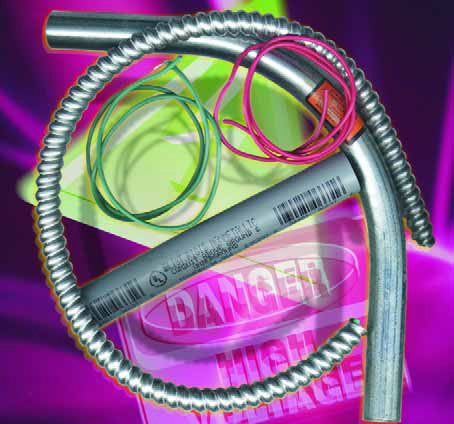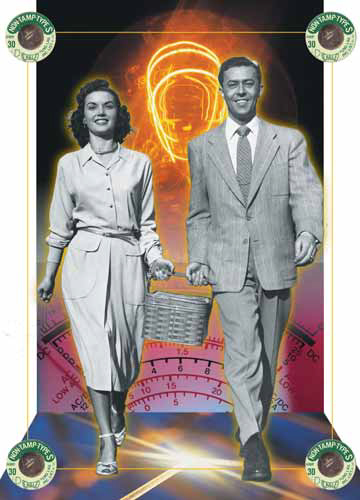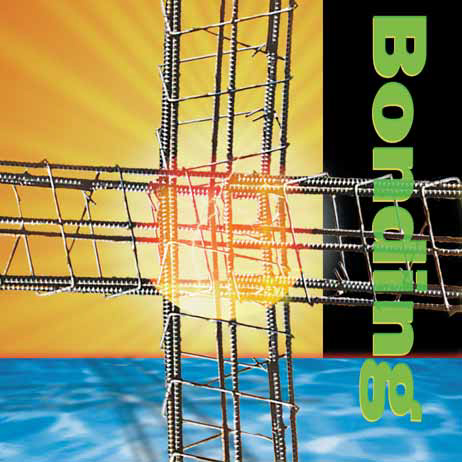safety
I love the versatility of fiberoptic lighting: The technology works equally well in conjunction with landscaping or architectural features, and because there's no electrical current to worry about at the light fixtures themselves, they're a natural around water. Better yet, you can use fiberoptics to create traditional point-light sources, or you can set them up as mellow bands of light over long stretches. I don't use fiberoptics on every job, but when the situation is right and the customer is willing, I'm eager to dig in and design a system that will wow them for years to come. As is true with any lighting system, the main reason to use fiberoptics is
A little more than 100 years ago, in the first big growth spurt in the use of electricity, the harsh realities of the hazards involved with it quickly became apparent. Fires were common occurrences everywhere electricity was distributed, and serious (and often fatal) accidents made daily headlines wherever people came into contact with this wondrous phenomenon. Virtually all of the electric works being built in those early days were set up to provide lighting for a population tired of living in the gloom of candles, gas lamps and coal-oil lanterns. That meant that
Let's talk about really big boulders - the five- to eight-foot kind that weigh in at two to five tons apiece - and how they should be integrated into watershapes. The whole process of placing these big boulders begins with the design of the pool and relates to the kind of scale you're trying to achieve. Big boulders make other features seem small by comparison and can often overwhelm (rather than accent) a design if
In the spring of 1941, my mom and dad, my sister and I moved into our brand-new house on Ardmore Avenue in one of northwest Detroit's real estate developments. It was a thoroughly modern house, with all of the latest high-tech features - the garage door moved upward to open, instead of swinging left and right like barn doors, and the furnace in the basement was operated by natural gas, eliminating forever the need to shovel coal. The house cost $5,550. From an electrical standpoint, the house was up to the codes and standards of its day - albeit a far cry from what is required today. The wiring was a two-wire system with no ground. All of the receptacles had two equal-size slots, and that was just fine because anything we wished to plug into these receptacles had a two-pronged plug at the end of its cord. A fuse panel in a bedroom closet contained four 15-amp fuses. That was it: four fuses to
It's a simple fact: No matter where you are on the globe, ultimately it's dark exactly half the time. So no matter how beautiful your watershapes may be, if you don't fully consider lighting as a key component of your projects, you may be robbing your work of half its potential for pleasing your clients. That makes it a bottom-line issue, because lighting adds real value to most any watershape installation with a long list of benefits. For starters, it extends the time a watershape can be used beyond daylight hours. It also adds
Last month we covered the "hows" of grounding pretty well. Using the definitions from the National Electrical Code (NEC) for guidance, we saw that in order to be considered effectively grounded, the non-current-carrying metal parts of all equipment associated with a watershape must be connected to the system grounding bus at the electrical service panel. This is accomplished by installing a green-colored (or green with a yellow stripe), minimum No. 12 AWG insulated copper conductor between the equipment's grounding terminal and the system grounding bus. This conductor is
Through the years, the #1 question asked of me at seminars and trade shows has been: "What's the difference between bonding and grounding?" I have wanted to do an answering article far some time, but I was concerned that its length would require it to be split into two pieces and that the every-other-month format of WaterShapes might make it difficult to maintain continuity of thought over a two-month span. I was pleased when our editor informed me that we would be going monthly for a while. I figured I'd strike now, while the fingers are nimble and the magazine issues more
During our last session, we explored the water-flow/electric-current-flow analogy and summed it up in a few sentences that are worth repeating: • Water: The pressure created by the pump forces water to flow through the pipes and valves, overcoming the friction losses of the system. Higher pressure provides for more gallons per minute. • Electricity: The voltage created by the battery forces electrons to flow through the wires and switches, overcoming the ohmic resistance of the circuit. Higher voltage provides for more amperes. (The short version of that is, "Volts push amps through ohms.") To be truly useful to us, we must know something about the way these three basic units relate to
The triennial publication of the National Electrical Code is an event of critical importance to any contractor or subcontractor performing electrical installations or repairs. First published in 1897 and produced since 1911 by the National Fire Protection Association, the NEC is now enforced in all 50 states and also serves as the basis for codes in several foreign nations. As has been the case with all editions published to date, the 1999 edition of the code is designed to ensure "the practical safeguarding of





















